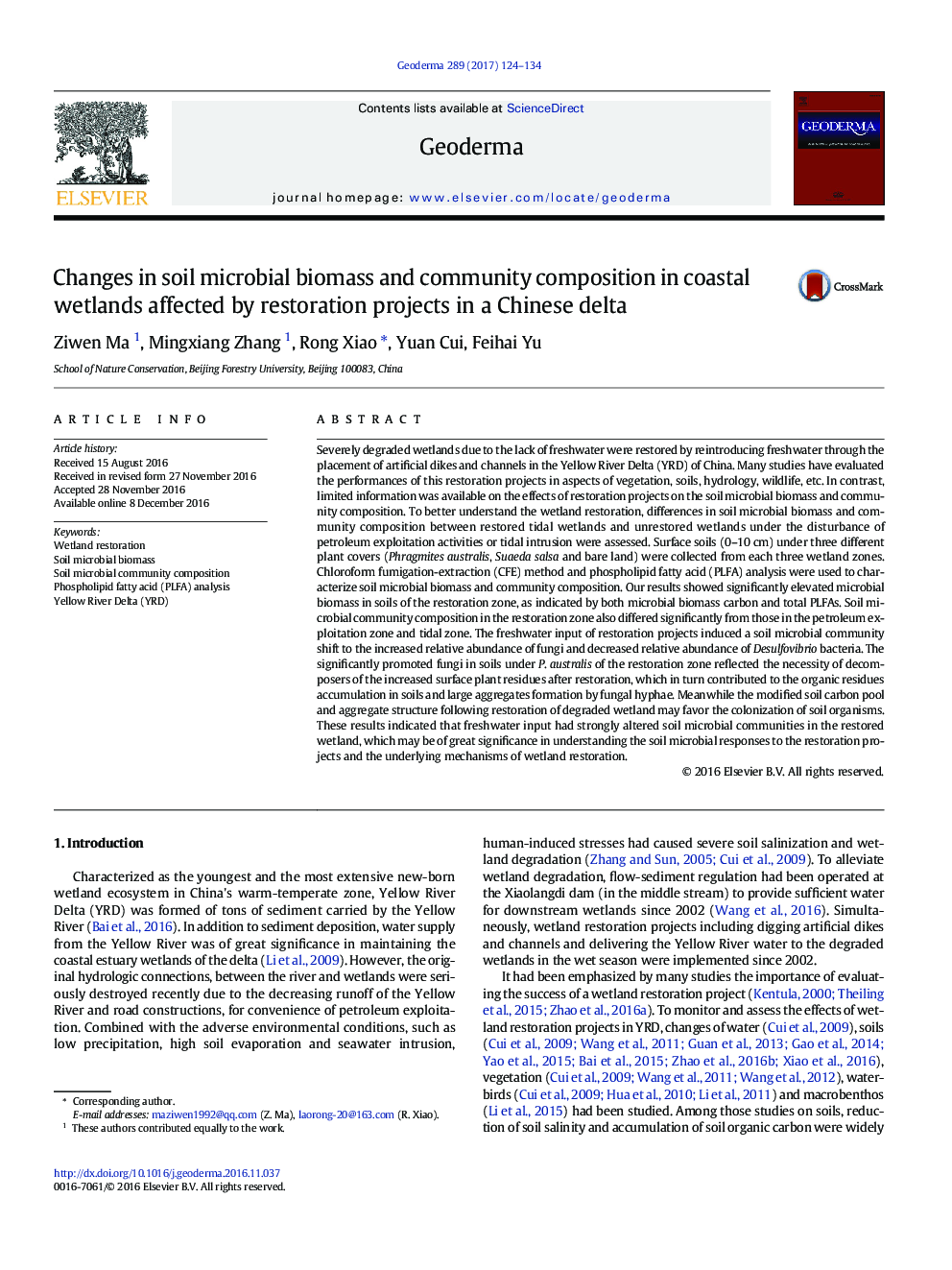| Article ID | Journal | Published Year | Pages | File Type |
|---|---|---|---|---|
| 5770720 | Geoderma | 2017 | 11 Pages |
â¢MBC and PLFA are effective indicators of soil status in a Chinese coastal wetland.â¢MBC and associated ratios are relatively higher in soils of the restoration zone.â¢Soil PLFA patterns are markedly affected by the restoration projects.â¢Fungi promotion are observed with aggregate stabilization and carbon sequestration.â¢Lower relative abundance of Desulfovibrio PLFAs are detected in restored soils.
Severely degraded wetlands due to the lack of freshwater were restored by reintroducing freshwater through the placement of artificial dikes and channels in the Yellow River Delta (YRD) of China. Many studies have evaluated the performances of this restoration projects in aspects of vegetation, soils, hydrology, wildlife, etc. In contrast, limited information was available on the effects of restoration projects on the soil microbial biomass and community composition. To better understand the wetland restoration, differences in soil microbial biomass and community composition between restored tidal wetlands and unrestored wetlands under the disturbance of petroleum exploitation activities or tidal intrusion were assessed. Surface soils (0-10Â cm) under three different plant covers (Phragmites australis, Suaeda salsa and bare land) were collected from each three wetland zones. Chloroform fumigation-extraction (CFE) method and phospholipid fatty acid (PLFA) analysis were used to characterize soil microbial biomass and community composition. Our results showed significantly elevated microbial biomass in soils of the restoration zone, as indicated by both microbial biomass carbon and total PLFAs. Soil microbial community composition in the restoration zone also differed significantly from those in the petroleum exploitation zone and tidal zone. The freshwater input of restoration projects induced a soil microbial community shift to the increased relative abundance of fungi and decreased relative abundance of Desulfovibrio bacteria. The significantly promoted fungi in soils under P. australis of the restoration zone reflected the necessity of decomposers of the increased surface plant residues after restoration, which in turn contributed to the organic residues accumulation in soils and large aggregates formation by fungal hyphae. Meanwhile the modified soil carbon pool and aggregate structure following restoration of degraded wetland may favor the colonization of soil organisms. These results indicated that freshwater input had strongly altered soil microbial communities in the restored wetland, which may be of great significance in understanding the soil microbial responses to the restoration projects and the underlying mechanisms of wetland restoration.
